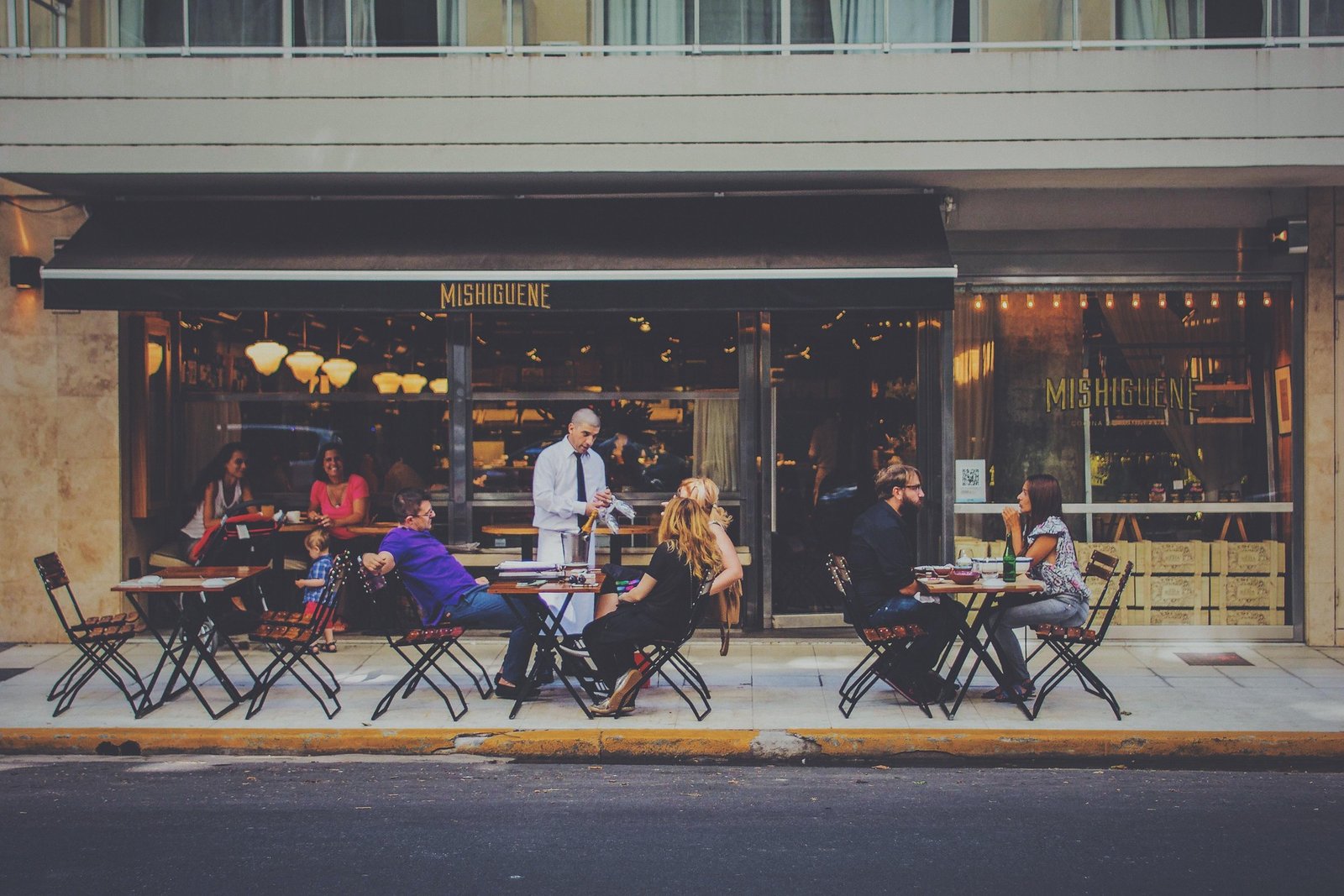Paris on a Plate: From Timeless Bistros to Trendy Eateries!

Overwhelmed by all the dining options in Paris? The world of dining is vast, diverse, and ever-evolving, with various types of restaurants and eateries that reflect both tradition and modernity. Whether you’re indulging in the grandeur of a Michelin-starred restaurant or grabbing a quick bite at a casual neighborhood bistro, each type of dining establishment tells its own unique story. While most different types are seeping into each other, we’ll take a journey through the world of traditionally different dining establishments, specifically in Paris, exploring their origins, evolution, and how they define the way we eat and socialize.
Traditional Elegance: Grand Restaurants & Michelin Stars
When you think of fine dining, the image that likely comes to mind is a grand restaurant. These are establishments where elegance, sophistication, and impeccable service take center stage. Traditionally, grand restaurants were places of luxury and exclusivity, often associated with fine French cuisine and haute gastronomy. These restaurants were designed to offer the ultimate dining experience—exquisite dishes prepared by masterful chefs and served in lavish settings. These may be located within five or seven star hotels known as a ‘palace’, such as The Ritz Paris being the first one to start restaurants within the hotel setting.
A key hallmark of traditional fine dining is the Michelin star. They are coveted in the culinary world, and restaurants with one, two, or three stars are recognized globally for their excellence. A three-star Michelin restaurant, in particular, is known for its exceptional cuisine worth a special journey.
A Nod to History: Brasseries and Bistros
While grand restaurants offer a formal and luxurious dining experience, brasseries and bistros offer something more relaxed but still rooted in French culinary tradition.
Brasseries originally started as beer breweries, serving not just beer but also hearty meals to patrons. Over time, they evolved into casual dining spaces where classic French comfort food, such as sauerkraut, steaks, and roasts, are served in a laid-back atmosphere. Brasseries are often larger than bistros and are great for enjoying a meal with friends or family in a cozy yet unpretentious setting. They fall in between a restaurant and a bistro, having the historic decor and upscale uniformed servers that a restaurant offers, while still being a casual space for locals to hang around in.
On the other hand, bistros trace their origins to the Russian word bystro, meaning “quick”, but this remains uncertain. Historically, bistros were small, informal spots where patrons could enjoy a hearty meal quickly and affordably. Usually found with the iconic checkered table clothes and simple branded cutlery, they offer hearty meals to their neighbourhood regulars.
Visiting either a bistro or a brasserie is a more everyday occurrence for the French office worker who wants to enjoy a wholesome meal that is not as expensive but still provides a good sit down experience. These establishments generally offer a ‘menu’ on weekdays which includes a starter, main, and dessert (entree-plat-dessert), or a main with either starter or dessert, with the main usually being the dish of the day (plat du jour). These are convenient, quick, and affordable saving time for sipping on wine rather than making a choice.
Today, neo bistros have emerged, blending classic French dishes with contemporary cooking techniques and presenting them in a more casual, yet refined, environment. They generally focus on the quality of the ingredients, ensuring they are sustainably and organically farmed. Therefore keeping the traditions of their ancestors, at the same time bringing it into modern times.
Recommendations
Brasserie des Prés (brasserie)
Bistrot des Vosges (bistro)
Biche Restaurant (neo-bistro)
The Heart of the Neighborhood: Bouillons & Cafes
Neighborhood dining establishments, such as bouillons and cafes, are integral to the social fabric of many cities. Bouillons were once simple, broth-based eateries founded by butchers. These places provided affordable, nourishing meals to working-class people. Today, bouillons still serve up classic French comfort food but have modernized to offer accessible, high-quality French dishes at reasonable prices.
Similarly, cafes have long been a space for socializing, serving coffee, pastries, and light meals. The atmosphere is relaxed, often offering patrons a chance to linger over a cup of specialty coffee or a glass of wine. The rise of artisanal coffee culture has transformed cafes into hubs for the coffee connoisseur, where patrons can enjoy meticulously crafted brews, sometimes in addition to their favorite pastries.
Casual Dining: From Brunch Spots to Ethnic Eateries
While upscale dining establishments like Michelin-starred restaurants cater to those seeking luxury, casual dining has seen an incredible boom in recent years. Brunch spots have become a cultural phenomenon, combining breakfast and lunch in a laid-back setting where eggs, pancakes, and mimosas rule the menu. These venues focus on creating a social dining experience that’s just as much about the atmosphere as the food.
Similarly, ethnic cuisines have become increasingly popular, offering diners the chance to explore a variety of flavors and ingredients from around the world. From the kebab to gyros to shawarmas to cheese naans, these restaurants bring cultural diversity to the table, offering exciting new flavors to suit every palate.
Even within the realm of casual dining, burgers and sandwiches have evolved from simple fast food to gourmet creations. Upscale burger joints and sandwich shops now offer carefully crafted, high-quality versions of these comfort foods, turning them into something more than just a quick meal.
Modern Innovation: Breweries, Bars, and Cocktail Lounges
While dining is primarily about the food, drinks play an equally important role in the overall experience. Breweries have shifted from traditional beer-making facilities to vibrant spaces where patrons can sample craft beers, enjoy hearty meals, and socialize. These establishments celebrate the art of brewing and often serve food that complements the diverse range of beers available.
For those in search of something more sophisticated, cocktail bars have become increasingly popular, offering expertly mixed drinks in chic, intimate settings. Unlike traditional bars, which focus on quick and casual drinking, cocktail bars provide a more elevated experience with carefully curated drink menus and exceptional service. Historic bars like Harry’s New York Bar have even achieved legendary status, becoming cultural icons in their own right.
Affordable French Classics: From Traiteurs to Takeaways
Not every dining experience has to be expensive or elaborate. Some of the most beloved eateries are those that offer affordable, delicious meals. Traiteurs are French-style caterers that serve freshly prepared meals for takeout or special occasions. These establishments focus on convenience without compromising on quality, making it easier for busy individuals and families to enjoy tasty, home-style dishes.
Similarly, takeaway establishments (or takeout in some regions) are a staple in modern dining culture. These spots focus on providing quick, convenient meals for those on the go, allowing people to enjoy a meal from the comfort of their own home or at the office.
Bistronomy: The Art of Casual Fine Dining
In recent years, the concept of bistronomy has emerged as a blend of bistro and gastronomy, combining the casual atmosphere of a bistro with the high-quality ingredients and culinary techniques of fine dining. This trend has made gourmet food more accessible to a wider audience while maintaining a relaxed and inviting setting. The focus is on delivering exceptional culinary experiences without the formal atmosphere of a Michelin-starred restaurant.
Bonus Tips
While a Michelin star or two does guarantee a certain level of excellence, many restaurants in Paris, some more affordable than the other, located either in a palace or otherwise offer a dining experience of extremely high quality without the pressure of a star. So look out for those beautiful restaurants, filled with locals without any large menu cards in English displayed outside. A menu card or a carte is almost always displayed outside restaurants in France, but in French. You may find a carte in English, if you ask nicely, but that is usually at eateries around popular tourist spots. Google translate and google reviews are your best friends when dining in Paris for someone who is new to the city. Some signs to look for outside an eatery apart from the Michelin star or recommendation would be Gault & Milau, Le Fooding, and Le Monde. These are markers of good restaurants recommended by local critics.
The Future of Dining
As dining continues to evolve, we see a fascinating blend of tradition and innovation. Whether it’s the elegance of a grand restaurant, the cozy atmosphere of a neighborhood bistro, or the casual charm of a modern brewery, the diversity of dining options ensures that there’s something for every taste, occasion, and budget. The dining scene is always changing, reflecting shifting cultural trends, evolving tastes, and the desire for new experiences.
In this dynamic landscape, one thing is clear: food is more than just sustenance—it’s a reflection of culture, creativity, and community. So, whether you’re savoring a Michelin-starred meal or grabbing a quick sandwich, each dining experience adds a new layer to our understanding of the world around us.
Now that you know what your options are, and have decided where you are dining on your next trip to Paris, come on down and make sure you book a tour with us to learn more and experience Paris with the locals. Click the link below to discover more and pick up that call from culture!
